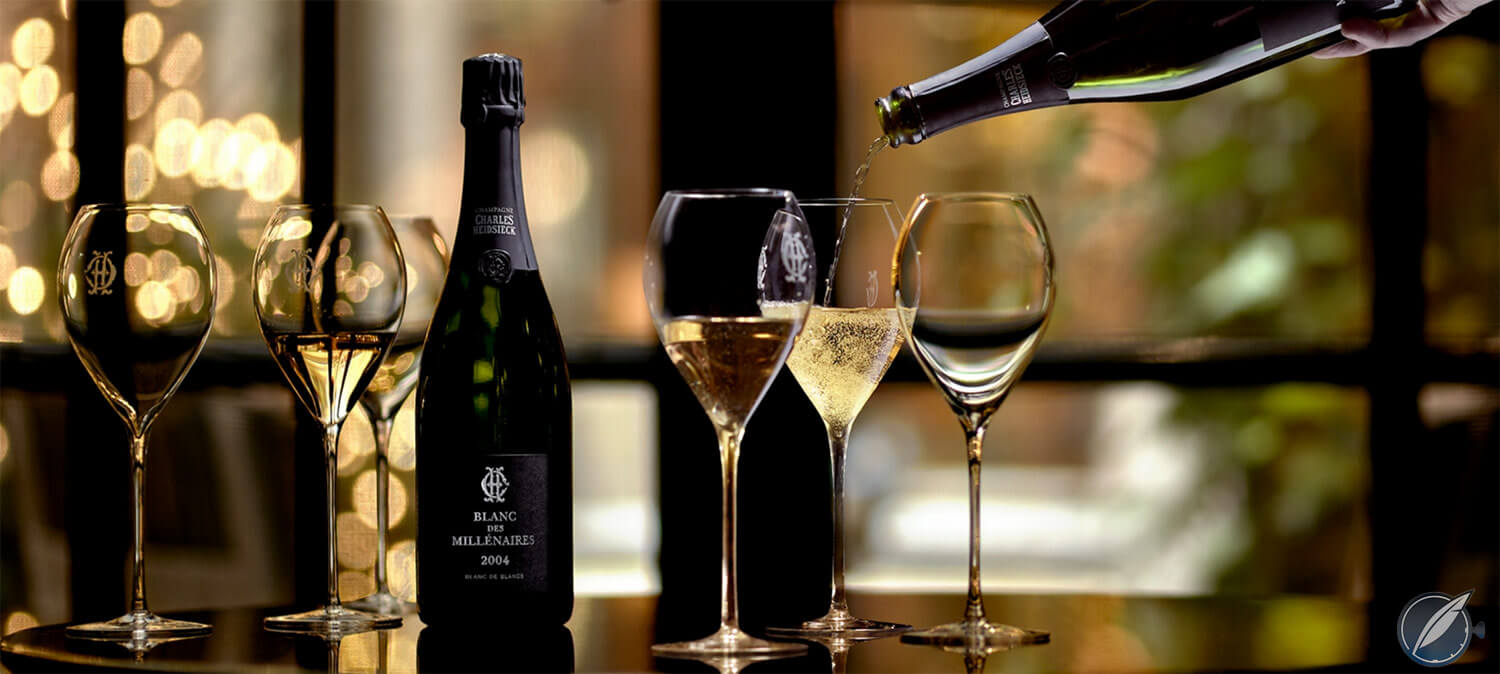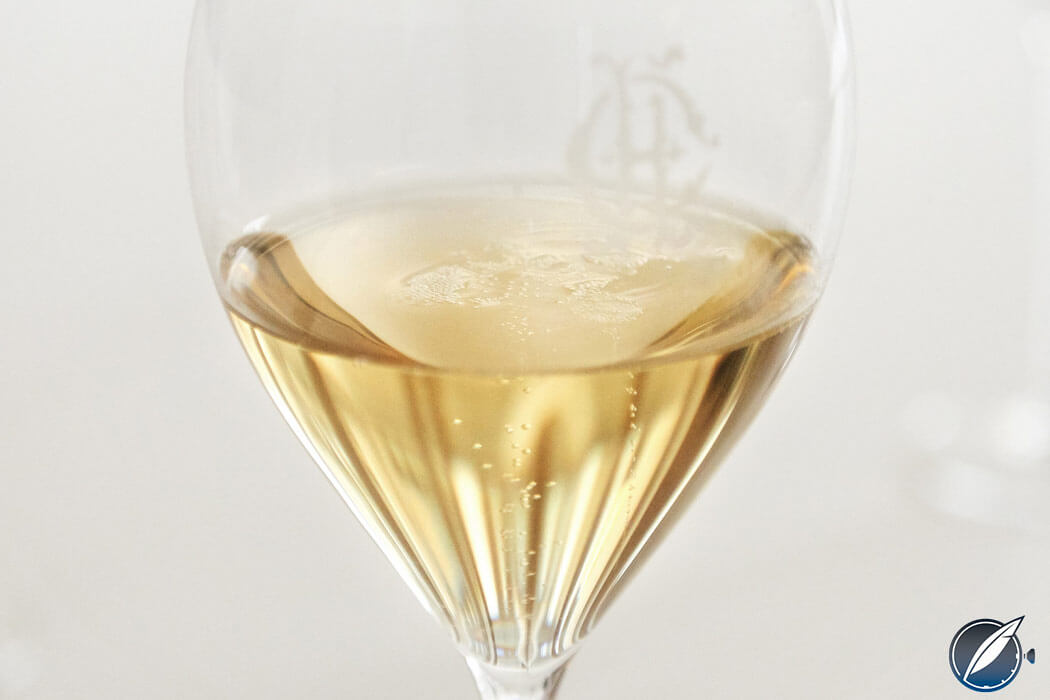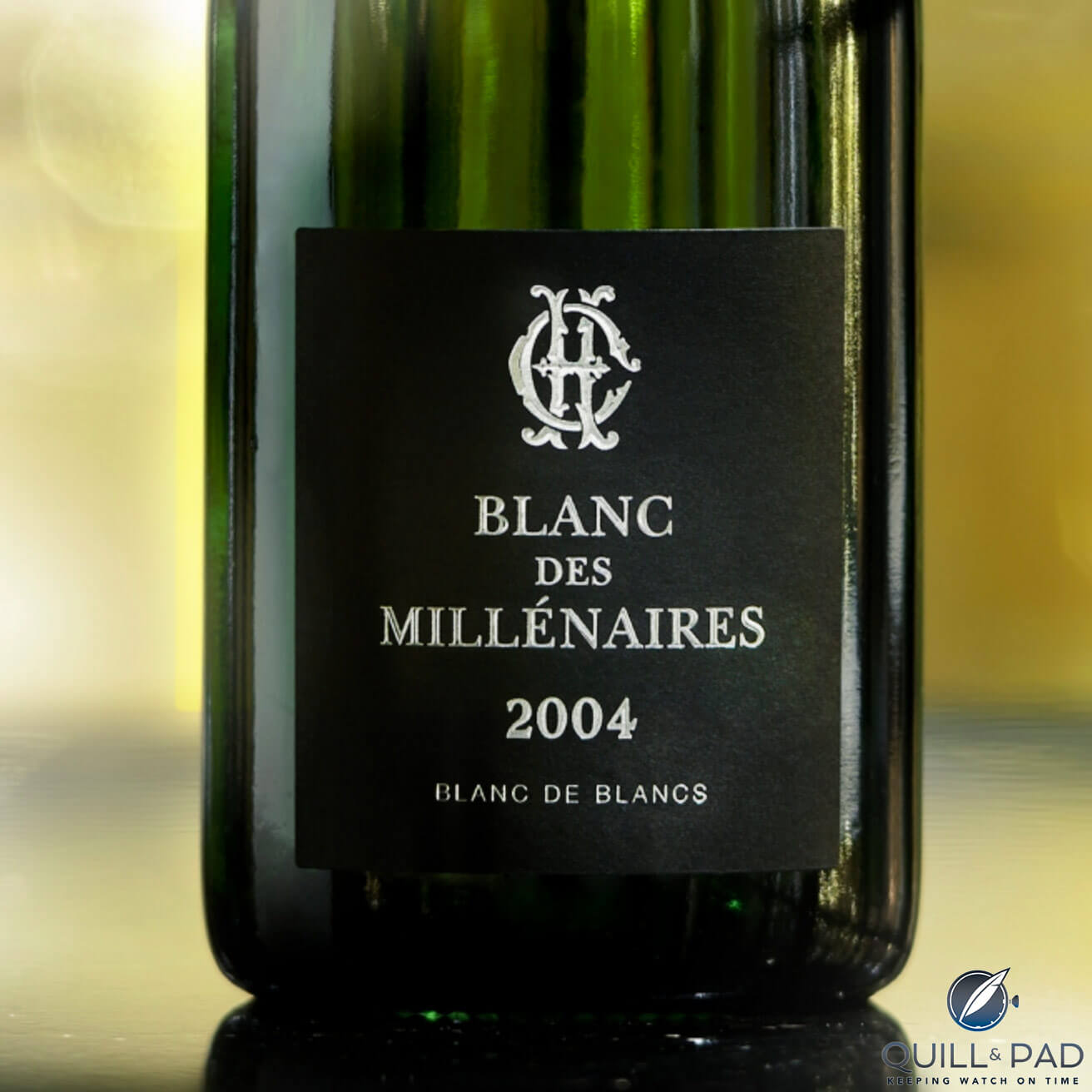by Ken Gargett
The king is dead. Long live the king.
It has been with us seemingly forever, but finally, the esteemed house of Charles Heidsieck will move on from the 1995 vintage of its stunning prestige cuvée Blanc des Millenaires to the 2004 vintage (AUD$430).
What about all those vintages in between, you ask? Well, these missing vintages are part of what makes this wine so special.
Cyril Brun, chef de cave at Charles Heidsieck and formerly of Veuve Clicquot, was recently in Australia doing the rounds to introduce the faithful and many new fans to both this wine and the beautifully elegant Rosé NV (AUD$160); what is arguably the best non-vintage available on the market, Heidsieck’s Brut NV (AUD$120); the delicious new vintage rosé, the Rosé 2006 (AUD$199); and the latest vintage, the complex 2005 (AUD$189).
As good as all of these wines are, they were merely support acts on this occasion filling in some time before Bruce Springsteen and the E Street Band take the stage. In reality, those other wines are all deserving of enormous praise and attention, but prestige cuvées are always the prettiest girls at the party.

Charles Heidsieck Blanc des Millenaires 2004
The 2004 is only the fifth release of this wine, following on from the inaugural 1983 as well as the 1985, 1990, and the legendary 1995. Some may recall that at one time Charles Heidsieck’s (and forgive me for detailing the full name, but there is also Piper Heidsieck and Heidsieck Monopole) prestige champagne was the famous “Champagne Charlie.”
“Champagne Charlie” was discontinued and Blanc des Millenaires was born, which seemed very curious on several levels. First, “Champagne Charlie” was considered to be very successful with a first-class reputation, so the decision to cease production was odd to say the least. Secondly, “Champagne Charlie” had always been seen as a Pinot Noir House, so moving to a blanc des blancs (100 percent Chardonnay) for the prestige cuvée appeared to be somewhat out of kilter. No matter, though.
The good news is that Brun has reinstated the “Charlie” so we can look forward to two stunning prestige cuvées, although it will take a few years before the first one is available. And Cyril was giving away no secrets as to the vintage.
The reason I mentioned that the missing vintages contributed so much to this latest release is because they show that Charles Heidsieck is a house that will not release any champagne unless it meets the exacting standards. This is not merely marketing guff, as it so often is.

I asked Brun about some of the missing years when we could have expected a Blanc des Millenaires. The most obvious is 1996, at the time considered one of the greatest vintages of all. It is still very highly regarded and has given us many great champagnes, but perhaps the halo has slipped a fraction. Charles Heidsieck did make a 1996 Blanc des Millenaires, but sold it to another producer – which one and what it appeared as: who knows? Brun said it simply did not reach the heights they wanted. He is much more a fan of the 1995 vintage than he is of the following year.
Another of Brun’s favorite years is 1988, which has emerged as one of the region’s truly stupendous vintages in the last three or four decades. This was before Brun’s time so he doesn’t know why there was no Blanc des Millenaires from ’88, but it is a vintage he regards with admiration.
More recently, 2002 would have seemed to have been an ideal year. And this is where the second part of the “policy” comes in. Charles Heidsieck made the decision in the late 1990s that it needed to rebuild its reserve stocks and so no vintage wines of any kind were made from then until the 2004 vintage. This would have resulted in considerable financial sacrifice by the house as there could have been vintage, rosé, and prestige for years like 2000 and 2002. Instead, all these grapes went into the reserve program for use in the non-vintage blends. It will ensure that the stellar quality continues.
The 1995 Blanc des Millenaires is not totally gone – thankfully, for it is drinking exquisitely. A few fine restaurants may still have a bottle or two, and Charles Heidsieck still has some on lees and some under diam (a cork-like stopper, but one designed to hopefully remove the possibility of cork taint). Look forward to them in a decade or so.
Charles Heidsieck was able to offer it as its prestige cuvée for so many years because the chef du cave at the time, the brilliantly talented Daniel Thibault who so sadly passed away in his mid-fifties, recognized the phenomenal quality of the year and made far more of this wine than the company had ever done before. Indeed, it is believed that he made about three times the quantity he told his bosses, knowing what their reaction would be to the prospect of having to sell such an amount. It was an inspired decision.
Over the years, it had three different labels and was disgorged on three separate occasions.

Charles Heidsieck Blanc des Millenaires 2004
The 2004 is perhaps a whisker short of the brilliance of the 1995 at the moment, but the latter wine has the advantage of so much extra time. Expect the 2004 to be every bit its equal in the years to come. As is usual for this wine, it comes from a combination, around a fifth from each, of four grand cru villages – Cramant, Avize, Oger and Le Mesnil sur Oger – and one premier cru village – Vertus. The aim is “to fully reflect the Côte des Blancs,” the home of these villages and the acknowledged ground zero for great Chardonnay in Champagne. It has spent more than a dozen years on lees and has a dosage of 9 grams/liter. Yields from 2004 were around triple those achieved in 1995.
The wine offers an array of flavors and aromas – gentle toast, lemon butter, quince, a touch of marmalade, grilled cashews, some stone fruits. It is reflecting some early development and is wonderfully complex, finely balanced, and extremely long. It has a wonderful future ahead, though don’t expect it to remain on the shelves for anything like the length of its predecessor.
For more information, please visit www.charlesheidsieck.com/en/blanc-des-millenaires-2004.
Leave a Reply
Want to join the discussion?Feel free to contribute!





















































This cuvée May indeed be very fine. However the word “king” is a bit too much. There are many excellent blanc de blanc (meaning 100% Chardonnay) champagnes to be found. Frankly in my experience the finest do not come from the large houses. Champagne is undergoing a revolution with small boutique producers offering distinctive wonderful cuvées with character that the large houses lack. For example there are single vineyard grand cru cuvées that have real terroir expressing their vineyard. The large houses can’t do that. Indeed, the large houses can’t even guarantee that their cuvées prestige are all 100% grand cru. It takes devotion to find these small production gems but they are worth it.
Hi Jeff. thanks for the thoughts. Without wishing to throw my esteemed and wonderful editors under the proverbial bus, I can’t claim responsibility for the headline (writers never get any say in headlines and photo captions – learnt that the hard way).
That said, I would argue that it certainly sits with the very greatest of the blanc des blancs you will find. I think the very first piece I did for Q&P was on another glorious blanc des blancs, the Belle Epoque from Perrier-Jouet. Different but also wonderful. Plenty more. I had a 1995 Taittinger Comte last night with friends. another blanc des blancs and absolute heaven.
I would take issue with your suggestion that the larger houses can’t guarantee 100% grand cru. They can if they want to. Of course, the economics mean that they also use a great deal of premier cru material especially in their cheaper wines. nothing wrong with that. Reflected in the price.
I am aware of your references to the grower movement and what they offer. And I am fully on board with how brilliant some can be. But they are very different from what the larger houses offer. They have to be as they cannot access the immense resources the big houses have. Very few grower champagnes would be 100% grand cru – unless they have won the lottery and the family vineyards are so situated.
For the big guys, it is all about blending – vineyards, grapes, vintages. The growers are the opposite, by necessity but they have made a virtue of it.
The problem with the growers at the moment is that while there are some fabulous ones – I would have more Ulysse Collin in my cellar than any other producer, large or small and they are exactly as you describe and I love them – there are a high percentage that are not making the grade.
A mate of mine wrote a superb book on grower champagne – Rob Walters’ ‘Bursting Bubbles’. If you have not seen it, definitely worth chasing it. Rob is perhaps a bit too anti the larger houses for me, but that is his preference.
For me, I’m happy to drink the best wines from both the large houses and the top growers.
Jeff, I was going to lead with a mea culpa as the one responsible for the headline; however, I think I deserve congratulations instead.
Not only can I claim that the headline was effective if it enticed you, but I’ll bet at least part of the reason you clicked was that you disagreed with the bold claim in the title.
And I’d like to add that I stand by the veracity of the claim of “king” and am disappointed in Ken for folding so quickly. Since when has the king been the strongest, fastest, smartest, or best tasting? The king is the most powerful, and all of the fantastic growers in the world aren’t likely to threaten the higher nobility of brands because just as in watchmaking, there’s an often uneasy symbiosis between the large production and smaller but often highly creative.
Thanks for eliciting that comprehensive reply from Ken, I hadn’t realized before that growers were the indie watchmakers of the vineyards.
Regards, Ian
p.s. Jeff, I will concede that “a king” would have been more accurate than “the king” (but so much less effective).
Hello Ken, Jeff, and Ian,
Many thanks for this great highlight on our House and the discussion. we feel honored that our
quest for excellence and quality of our champagnes meet your attention.
The King or a King… is not our issue here in Reims.
We use to say in Champagne there are no competitors but fellows. So many great champagnes for so many different occasions… enjoy !
Best from Champagne where harvest has already started…
Véronique from Charles Heidsieck